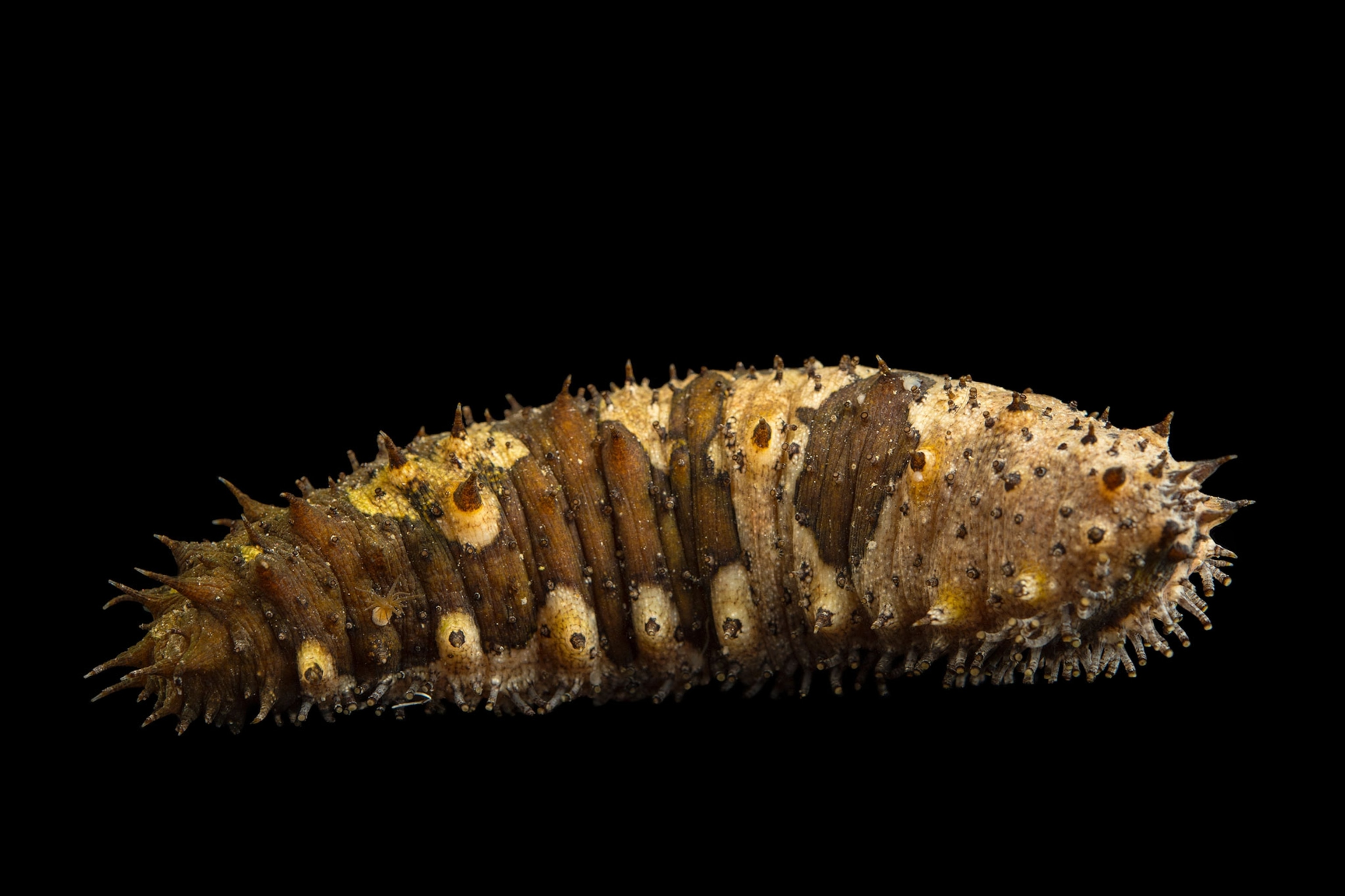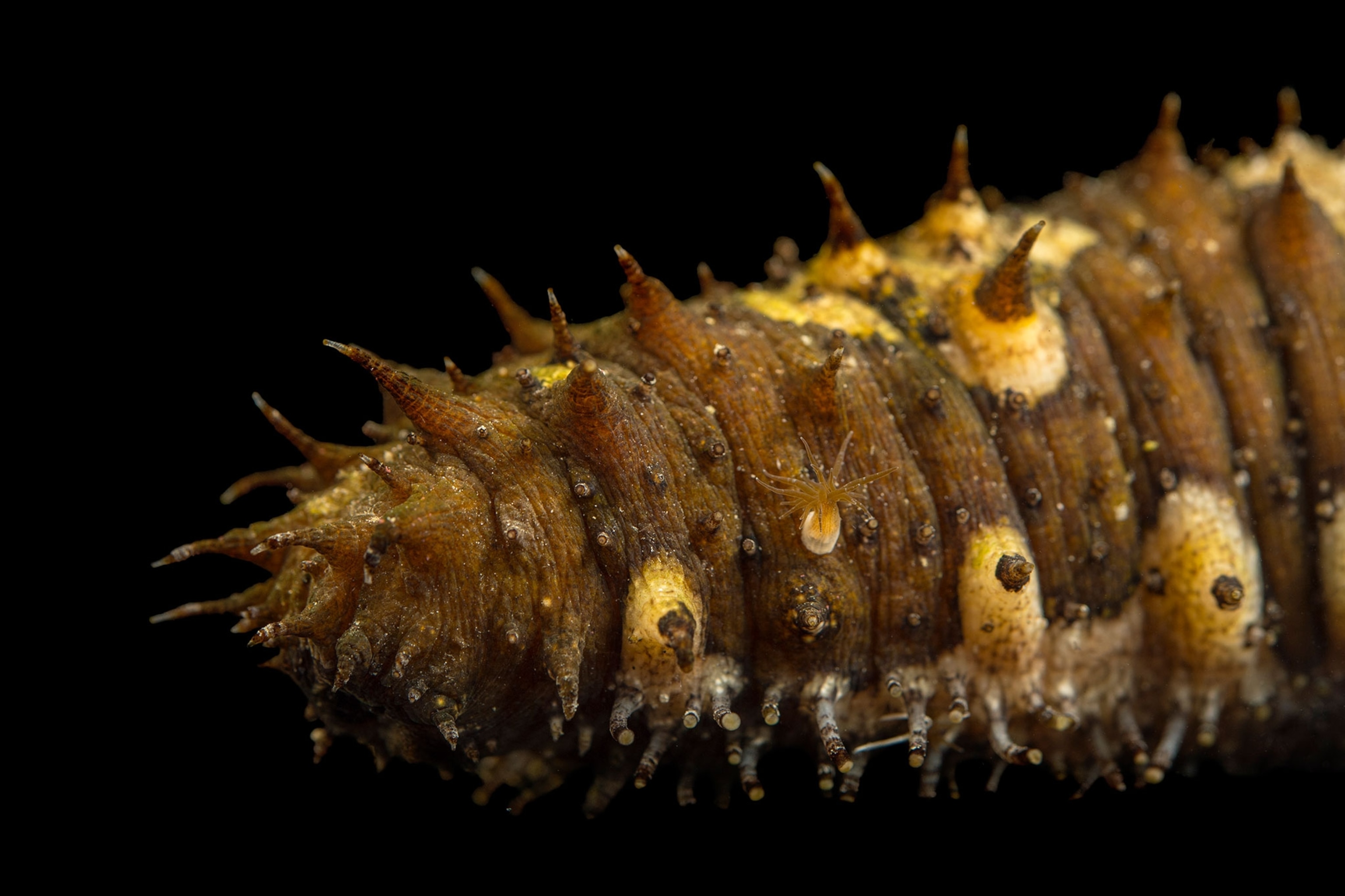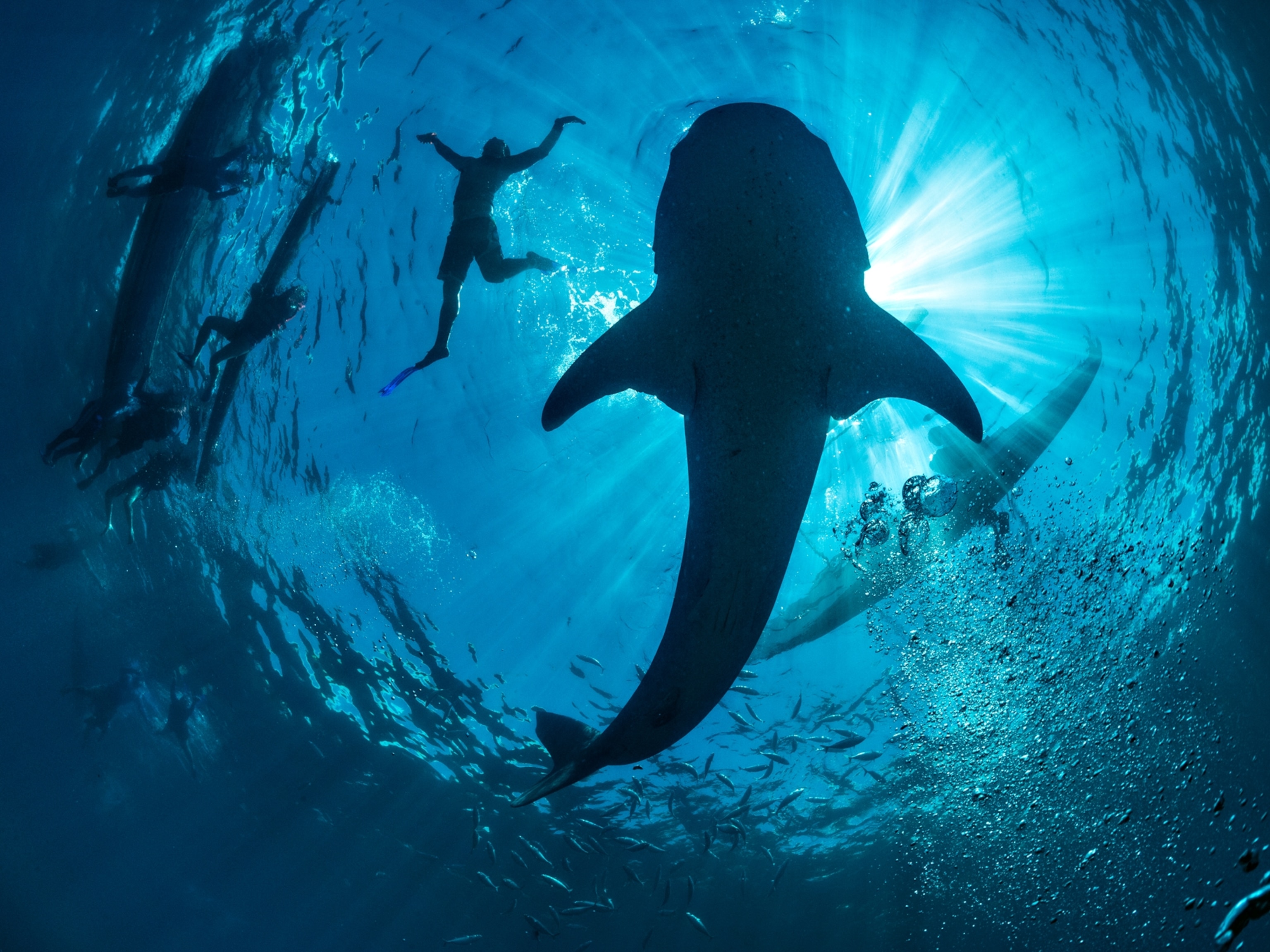By simply eating and digesting food, these squishy sea creatures help keep the ocean clean and resilient, even fighting climate change.
The video you are about to watch contains a sea cucumber in various states of evacuation. It is in high definition, and it cannot be un-seen.
But you should watch it anyway. Here’s why.
On one hand, sea cucumbers may appear to be simple creatures; they’re basically just crawling chunks of intestine wrapped in meat, says invertebrate zoologist Christopher Mah. Related to starfish and sea urchins, sea cucumbers belong to a group of animals known as echinoderms and make a living on the seafloor. But through the process of eating, digesting, and excreting, they have a big and complex impact on the environment—including shoring up the health of coral reefs and sea grass beds, and even mitigating some effects of climate change.
Also, when it comes to the process of digestion and, um, defecation, there’s much more going on in a sea cucumber than meets the eye. These animals boast some of the busiest backsides in the animal kingdom.
“In one species it was documented that they have kind of a respiratory ability,” says Mah, a research associate for the Smithsonian National Museum of Natural History. “They can take up oxygen through a region around their anus.”
You see, when a sea cucumber opens its backdoor, the creature can also take in seawater. This is then passed through a series of oxygen-extracting chambers known as respiratory trees.
And that’s not all.
“Our work suggests that organic materials contained within this tidal flow could be assimilated by the cells that line the respiratory trees,” says William Jaeckle, a marine biologist at Illinois Wesleyan University who studied the sea cucumber species known as Parastichopus californicus.
When threatened, sea cucumbers can also violently expel part of their respiratory trees, called Cuvierian tubules, to create a sticky net that stops small predators like crabs and fish in their tracks.
In other words, not only do some species of sea cucumbers breathe out of their fannies, but they can also feast and fight.







Moving Ecosystems
While there are none featured in this video, shot by a Japanese diving outfit known as Southern Islander, a surprising number of creatures make a cozy little home inside sea cucumbers.
“Pearlfish are these fish that actually enter in and out of these anal openings,” says Mah, who writes about echinoderms at The EchinoBlog. “They live in the rectal cavities of sea cucumbers.”
Some species will share their sea cucumber with other pearlfish, but others are extremely territorial and will defend the cavity they’ve claimed. Most seem to do their host no harm, but at least one genus, called Encheliophis, is known to eat the sea cucumber’s gonads. (Related: “How This Fish Survives in a Sea Cucumber’s Bum.”)
Small shrimp and crabs have also been documented hanging out around sea cucumber derrieres, in addition to an array of gastropods, copepods, flatworms, and a whole host of other creatures found parasitizing the rest of the body.
“A sea cucumber is almost sort of a moving ecosystem on its own,” says Mah.
“A Peaceful Sort Of Life”
There are around 1,250 different species of sea cucumber scattered across the world’s oceans, and they occupy many different niches. For instance, some bury themselves completely in sand, like worms, while others snag food as it floats by in the water column, like corals.
Others, like the deposit-feeding sea cucumber featured in this video, Thelenota anax, walk across the sea floor mopping up sediment and stuffing it into their mouths with an array of tentacles.
“One at a time, over and over,” says Richard Strathmann, a marine biologist and professor emeritus at the University of Washington. “It has always looked to me like a peaceful sort of life.”
Because these animals eat the organic materials found wedged in between all that sand, what comes out of a sea cucumber is actually ‘cleaner’ than what went in. And this simple process of sifting through the sediment—which scientists call bioturbation—can have quite an impact on the makeup of the ecosystems they live in.
Significance of Sea Cucumber Poo
Watching a sea cucumber defecate may strike some as silly, but those coils of compacted sand are more valuable than you might imagine.
A study published in PLOS ONE in 2012 found that sea cucumbers help keep organic matter from building up on the seafloor, which in turn might prevent algae from running amok. This is important because when too many algae grow, forming what's known as a bloom, they can gobble up all the available oxygen as they die and decompose, choking out other wildlife. Scientists call this eutrophication.
Similarly, subtropical seagrass beds appear to grow better when sea cucumbers are around, according to a study published in the Journal of the Marine Biological Association of the United Kingdom in 2010.
In places where sea cucumbers are highly fished, seagrass did worse, the study found.
In China and elsewhere in East Asia, the animals are often cooked and dried into a product called bêche-de-mer (French for “sea worm”). And demand for these creatures continues to grow; more than 70 species of commercially valuable sea cucumbers are over-fished in many areas to meet demand in an increasingly affluent China.
That’s a problem for several reasons, not least of which being that sea cucumbers may be able to help coral reefs weather climate change. This is because when the little tubes digest all that gunk, they also release calcium carbonate, which corals need for their skeletons. At the same time, sea cucumber droppings increase the alkalinity of the water around them, perhaps buffering nearby corals from the effects of ocean acidification.
“Poop is something that everybody finds hilarious. And it certainly is. It’s an awesome thing,” says Mah. “But it’s also important for the ecosystem.”
Related Topics
You May Also Like
Go Further
Animals
- Octopuses have a lot of secrets. Can you guess 8 of them?
- Animals
- Feature
Octopuses have a lot of secrets. Can you guess 8 of them? - This biologist and her rescue dog help protect bears in the AndesThis biologist and her rescue dog help protect bears in the Andes
- An octopus invited this writer into her tank—and her secret worldAn octopus invited this writer into her tank—and her secret world
- Peace-loving bonobos are more aggressive than we thoughtPeace-loving bonobos are more aggressive than we thought
Environment
- Listen to 30 years of climate change transformed into haunting musicListen to 30 years of climate change transformed into haunting music
- This ancient society tried to stop El Niño—with child sacrificeThis ancient society tried to stop El Niño—with child sacrifice
- U.S. plans to clean its drinking water. What does that mean?U.S. plans to clean its drinking water. What does that mean?
- Food systems: supporting the triangle of food security, Video Story
- Paid Content
Food systems: supporting the triangle of food security - Will we ever solve the mystery of the Mima mounds?Will we ever solve the mystery of the Mima mounds?
History & Culture
- Strange clues in a Maya temple reveal a fiery political dramaStrange clues in a Maya temple reveal a fiery political drama
- How technology is revealing secrets in these ancient scrollsHow technology is revealing secrets in these ancient scrolls
- Pilgrimages aren’t just spiritual anymore. They’re a workout.Pilgrimages aren’t just spiritual anymore. They’re a workout.
- This ancient society tried to stop El Niño—with child sacrificeThis ancient society tried to stop El Niño—with child sacrifice
- This ancient cure was just revived in a lab. Does it work?This ancient cure was just revived in a lab. Does it work?
Science
- The unexpected health benefits of Ozempic and MounjaroThe unexpected health benefits of Ozempic and Mounjaro
- Do you have an inner monologue? Here’s what it reveals about you.Do you have an inner monologue? Here’s what it reveals about you.
- Jupiter’s volcanic moon Io has been erupting for billions of yearsJupiter’s volcanic moon Io has been erupting for billions of years
- This 80-foot-long sea monster was the killer whale of its timeThis 80-foot-long sea monster was the killer whale of its time
Travel
- How nanobreweries are shaking up Portland's beer sceneHow nanobreweries are shaking up Portland's beer scene
- How to plan an epic summer trip to a national parkHow to plan an epic summer trip to a national park
- This town is the Alps' first European Capital of CultureThis town is the Alps' first European Capital of Culture
- This royal city lies in the shadow of Kuala LumpurThis royal city lies in the shadow of Kuala Lumpur







